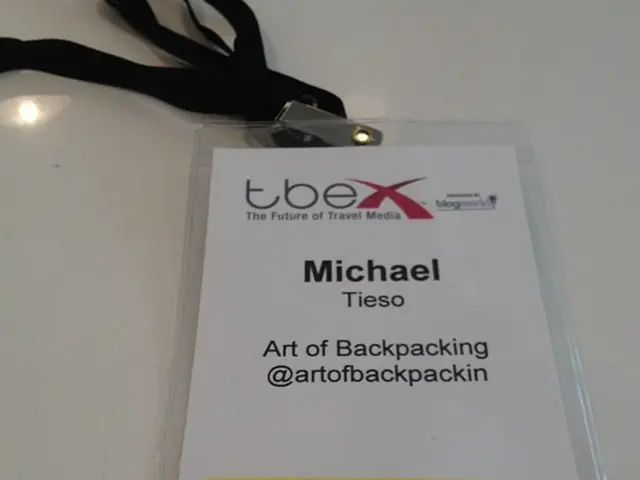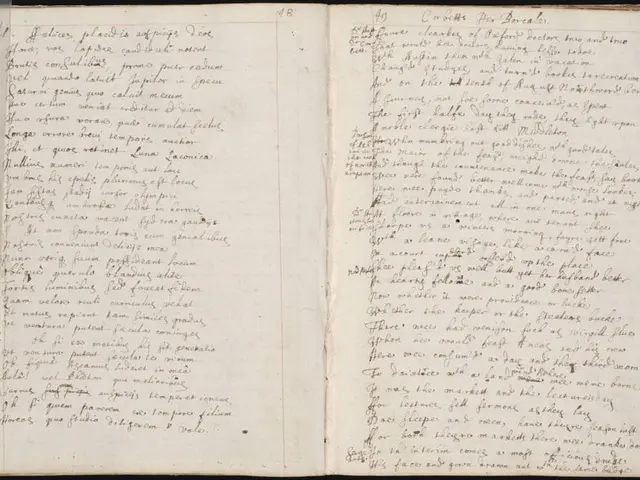Tesla relaxes driver surveillance system in latest Full Self-Driving update
Tesla Improves Driver Monitoring System in Latest Full Self-Driving Update
Tesla has made significant changes to its driver monitoring system (DMS) in the latest Full Self-Driving (FSD) software update, aiming to reduce the frequent "nag" warnings that drivers had been experiencing. The changes include increasing the time window during which drivers can look away without triggering a warning [1].
During Tesla's Q1 2025 earnings call, Elon Musk acknowledged the issue with the system's sensitivity. Quick interactions with the touchscreen, such as adjusting navigation, changing a song, or modifying climate settings, could lead to warnings or FSD "strikes" under the previous system [2].
The adjustment to make the system less sensitive is only part of software update 2025.14.6 for HW4 vehicles. With FSD v13.2.9, Tesla has fine-tuned the driver monitoring system to allow more reasonable behavior [1]. This change was confirmed by Tesla's VP of Autopilot AI, Ashok Elluswamy [3].
Musk stated that the current implementation of the system often causes users to disengage FSD just to make minor changes, then re-engage it, which he described as less safe overall [1]. He also suggested that the value of FSD will be profound when drivers can basically do whatever they want, including sleep, and the $99 price tag will seem like the best $99 spent [4].
Further, Musk and Tesla indicated that the upcoming “step change” FSD update (referred to as FSD v14) will substantially reduce the need for driver attention monitoring, which is a major planned improvement in the supervised driving system. This new version integrates learnings from the more advanced Robotaxi FSD builds and is expected to make the car's behavior far more human-like while easing supervision demands, possibly enabling unsupervised operation in select cities soon [3].
These improvements are part of a broader push to increase FSD parameters and capability, which will enhance handling of complex edge cases and make the system more reliable and human-like in response [1][3]. No specific timeline beyond these upcoming builds has been detailed, but Tesla’s roadmap anticipates incremental releases leading toward more autonomous operation with lighter supervision requirements in the near future [1][3].
The change in the driver monitoring system reflects Tesla's efforts to strike a better balance between safety and practicality in real-world use. Repeated violations of the previous system could temporarily suspend FSD access for up to a week. However, Musk mentioned that the car is currently very insistent that the driver pays attention to the road, and the company plans to gradually lighten up on this requirement [1].
While the updated DMS is less sensitive to brief glances away from the road, the article does not provide any information about Tesla's referral program for FSD. Hopefully, the improved driver monitoring system will come to HW3 vehicles in the future, but for now, HW3 vehicle owners will have to wait for a future update to experience it [5].
References:
[1] TeslaMotorsClub. (2025). Tesla's Q1 2025 Earnings Call Transcript. Retrieved from https://www.teslamotorsclub.com/tmc/threads/teslas-q1-2025-earnings-call-transcript.476922/
[2] Electrek. (2025). Elon Musk admits Tesla's driver monitoring system is too sensitive and promises improvements. Retrieved from https://electrek.co/2025/04/01/elon-musk-admits-teslas-driver-monitoring-system-is-too-sensitive-and-promises-improvements/
[3] Electrek. (2025). Tesla's next Full Self-Driving update will significantly reduce the need for driver attention monitoring. Retrieved from https://electrek.co/2025/04/05/teslas-next-full-self-driving-update-will-significantly-reduce-the-need-for-driver-attention-monitoring/
[4] Electrek. (2025). Elon Musk: Tesla's Full Self-Driving will be a game changer when drivers can sleep. Retrieved from https://electrek.co/2025/04/02/elon-musk-teslas-full-self-driving-will-be-a-game-changer-when-drivers-can-sleep/
[5] Tesla Owners Online. (2025). Tesla's Q1 2025 Updates: Improved DMS for HW4, No Info on HW3. Retrieved from https://teslaownersonline.com/forums/threads/teslas-q1-2025-updates-improved-dms-for-hw4-no-info-on-hw3.114507/
- Despite focusing on improving the driver monitoring system (DMS) in the automotive industry for Tesla's Full Self-Driving (FSD) systems, the updates also aim to address sensitivity issues in other areas, such as the touchscreen interfaces used for finance, navigation, and climate settings.
- As Tesla progresses in improving the driver monitoring system for transportation and automotive industries, the company plans a "step change" in the FSD update (FSD v14), integrating learnings from more advanced vehicle builds to make the car behave more human-like and reduce the need for driver attention monitoring, which could potentially pave the way for technology-driven unsupervised operation in select cities in the near future.




